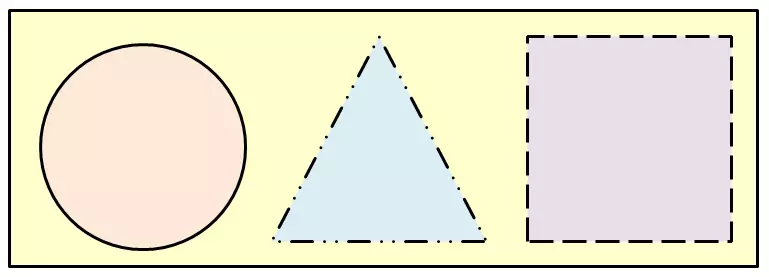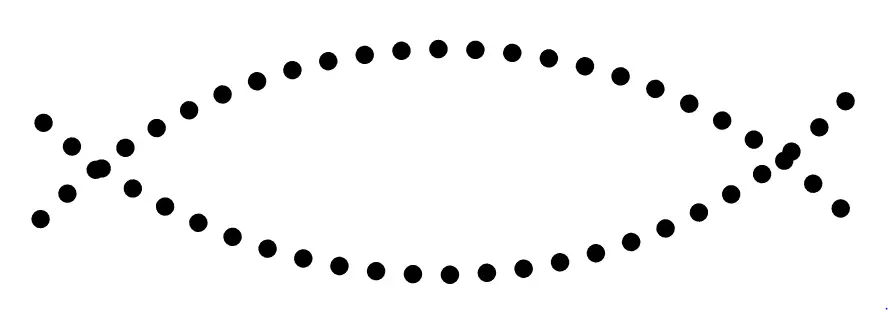Table of contents:-
- Process of Perception
- Process of Perception Phases
- Elements in the Process of Perception
- Role of Attention in Perception
- Theoretical Approaches to Perception
Process of Perception
Understanding the process of perception is important in various fields, including psychology, marketing, and communication. By understanding the process of perception thoroughly companies can design effective advertising campaigns which may help to capture consumers’ attention.
Perception is the intellectual process of transforming sensory stimuli into meaningful information, it consists of numerous sub-processes. Individuals can adopt an input-throughput output approach which states that the input in the environment when processed produces perceptual output.
Environmental stimuli such as people, subjects, and incidents are termed inputs. The mechanisms used for the conversion of these inputs such as selection, organization, and interpretation can be considered throughputs. Beliefs, emotions, attitudes, etc. which influence a person’s behaviour can be called perceptual outputs.
Inputs can also be classified into two types. One is the physical stimuli that a person gets from the external surroundings. The second type is taken up by the person himself in the form of pre-disposition (hope, intentions, and knowledge) and is based on prior experiences.
Related Article: Transactional Analysis in Organisational Behaviour
These two types of inputs provide every individual with a very special and exclusive image of the world which differs from the rest of the people. This perception of the world is unique for each individual as each individual has distinctive needs, wants, desires, beliefs, skills, etc. This is the reason why two people do not see the world in the same manner.
Process of Perception Phases
The process of perception involves three key phases: selection, organization, and interpretation of information.
First, we must select the relevant information from the vast amount of stimuli that we encounter. Next, we organize this information into a coherent and meaningful pattern. Finally, we interpret the information based on our past experiences, beliefs, and expectations. This process is important for our understanding of the world around us and our ability to make informed decisions. By mastering the perception process, we can enhance our communication skills, improve our problem-solving abilities, and develop a more fine understanding of the complexities of human behaviour.
The perception process includes selecting, organising and interpreting information.
The phases in the perceptual process include selectivity/selection and organization interpretation as shown in the figure.

Elements in the Process of Perception
- Exposure
- Selectivity/Selection
- Attention
- Organization
- Categorization
- Interpretation
- Inference
1) Perceptual Selectivity/Selection
Every day we meet with numerous stimuli out of which we select only a few. Perceptual selectivity is the selection of certain stimuli from the environment and rejection of others. This selection choice depicts our values, beliefs, and needs.
If an individual is not skilled in perceptual selectivity then he will be incompetent in processing the information as well. Two related processes which help in enhancing selectivity are as follows:
i) Sensory Activation: Sensory activation states that there are only certain types of stimuli that activate our senses while others that are not loud, bright or strong, might go unnoticed.
ii) Sensory Adaptation: Sensory adaptation means people tend to adapt themselves to the environment with which they are in regular contact. For example, a person forgets the sound of a radio or television while doing routine activities.
Hence, the above two processes prevent certain stimuli from entering our perceptual systems. Stimuli that are left behind compete to gain focus. Certain internal as well as external factors play an important role in stimuli selection.
2) Perceptual Organisation
Once the stimulus is received, several activities occur in the perceptual process. The perceptual organization relies on these activities. A person generally does not observe the amount of light, sound, or colour linked to any event but he certainly observes an organized pattern, stimuli, or object attached to it.
The following factors affect perceptual organization:
i) Figure and Ground
The most essential type of perceptual organization is the figure-ground principle. It states that when a person perceives an object (thing or person), it occupies a separate space in the psychology of the individual.
ii) Perceptual Grouping
By grouping, the individual stimuli can be divided into significant samples. Factors affecting perceptual grouping are as follows:
a) Similarity: This principle states that objects which look similar are perceived to be a part of the same group. For example, workers who wore the same uniform might have different personalities, but still, they are perceived as the same.
b) Proximity: This principle states that stimuli located near each other are perceived as a collective pattern. For example, Employees belonging to a department are usually perceived as a team due to their closeness in the workplace.
c) Closure: People tend to perceive objects as a whole even when a part of them is missing as their perceptual process ignores the gaps created by sensory inputs. For example, while working on a project, the manager perceives that the entire team has agreed to it completely while a few workers might have disagreed with it. Another example is shown in the following figure where some parts of the figures are incomplete, but as we are familiar with these shapes we can identify them as a whole.

d) Continuity: Continuity and closure are nearly similar but have a minute difference, Closure provides the missing stimuli, while the continuity principle states that a person may tend to observe the consistent arrangement of lines rather than perceiving it as an individual entity (figure). Continuity might result in monotonous thinking.

e) Common Fate: This principle states that objects that move or work, in the same way, are treated as a unit. For example, a flock of birds, a herd of cattle, etc.
iii) Perceptual Constancy
Perceptual constancy is more complicated than perceptual organization. The world is a very complex and ever-changing place and constancy gives the individual a sense of stability. The world would become an unorganized and hectic place in the absence of constancy.
iv) Perceptual Context
Perceptual context is the most complicated form of perceptual organization. A simple stimulus, object, situation, or person derives meaning from perceptual context. The context in which managers and workers observe various elements is provided by organizational culture and organizational structure. For example, gestures like a raised eyebrow, a pat on the back, a handshake, a verbal order, or a new policy convey a special message to the employees.
v) Perceptual Defence
Perceptual context and perceptual defence are closely related to each other. People can be defensive towards stimuli or a dangerous situation. Perceptual defence is essential in analyzing relationships between union management and supervisor-subordinate. This is confirmed by many studies. These studies conclude that people must try to ignore incompatible, dangerous, and improper situations.
3) Perceptual Interpretation
The selection and organization of data are followed by its interpretation. Perception is believed to occur only after the data is interpreted because it gives meaning to the received and simplified data. Every individual interprets stimuli in his manner which is usually influenced by his experiences.
Stimuli are usually vague and hence can be interpreted in a manner that fulfils every individual’s personal needs, intentions, and interests. The gap between a person’s interpretation and reality depends on how clear the stimulus is, perceived prior experiences, and thought process.

Role of Attention in Perception
The dish antenna in our home receives all available signals from the satellite, but the television set’s tuner selects signals according to our preferences. Similarly, our senses can detect numerous stimuli at a given time, but attentional processes assist us in selecting relevant stimuli responsible for perception. The following are some important functions of attention in the context of perception:
Selective attention: The most essential function of attention is selectivity. It refers to a process in which attention is focused on stimuli of ongoing interest while ignoring other irrelevant stimuli. Selective attention acts as a filter.
Sustained attention: This is the ability to focus on a stimulus for an extended period without being distracted. The task of monitoring a radar screen requires sustained attention, and our attentional process aids us in performing such monotonous tasks.
Sensation: A closely related term to perception is “sensation”. Sensation is the initial contact we establish with our physical environment. It focuses on describing the relationship between various forms of sensory stimulation (including electromagnetic, sound waves, and pressure) and how these inputs are registered by our sense organs (the eyes, nose, ears, tongue, and skin) (Baron, 2001, pp. 85). Therefore, sensation can be understood as the process of gathering information about the environment using our senses and then transmitting it to the brain for further processing, i.e., perception. The unconscious process of perception will interpret this sensory information to make sense of our world.
Theoretical Approaches to Perception
Two different theoretical approaches have been proposed by psychologists to explain the process of perception. One approach is known as the “Top-down processing approach,” and the other approach is known as the “Bottom-up processing approach.”
| Bottom-up processing | Top-down processing |
| The process of perception is straightforward. | The process of perception is mediated. |
| Perception is a data-driven process i.e., stimuli carry sufficient information to be interpreted meaningfully and an individual doesn’t need to rely on his experiences. | Perception is an experience-driven process i.e., stimuli don’t have sufficient information to be interpreted meaningfully and therefore, an individual needs to rely on his experiences. |
| J. J. Gibson strongly advocated for this perspective. | Richard Gregory strongly advocated for this perspective. |
Thus, top-down processing uses the existing knowledge to organize the features of the stimuli, while bottom-up processing analyses smaller features and constructs the complete picture. Both types of processing approaches are often used together in perceiving visual stimuli.
You May Also Like:-
Nature of Organisational Behaviour
Conceptual Foundation of Organisational Behaviour
Contributing Disciplines to organisational behaviour
Models of Organisational Behaviour
Approaches of Organisational Behaviour
Emotional Intelligence in Organisational behaviour
Factors Influencing Perception
Scope of Organisational Behaviour
Importance of Organisational Behaviour
Challenges and Opportunities of Organisational Behaviour
Factors affecting group behaviour
Causes of Conflict in an Organisation
Types of Conflict in an Organisation
Organisational Development Process
Factors Affecting Organisational Culture
